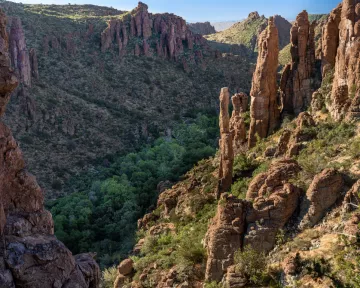June 1, 2024
All Our Blogs / Blog for Articles / "Canyon Echo Summer 2024" ...
Background Info on Local Mines
~ by Don Steuter

- Resolution Copper Mine–Oak Flat, Superior, AZ
- The obsolete mining law of 1872 allows for mining companies to use virtually any mining technique in order to maximize profits.
- Called block caving (mining from below the ore deposit) this project would result in a subsidence zone almost 2 miles wide and 800 feet deep that would destroy sacred indigenous sites and de-water neighboring springs and creeks.
- The harmful effects of this mine would extend 20 miles in either direction due to groundwater pumping on State Trust Lands near the San Tan Mountains and the massive tailings dump at Dripping Springs.
- Rosemont Copper Mine – Santa Rita Mountains, Tucson
- A court victory in 2019 and later upheld by the 9th Circuit put a dent in the 1872 law by ending the practice of dumping mine waste on federal lands.
- Clearly illegal for decades to most legal scholars, mines and land agencies ignored the law’s requirement that to be valid a mining claim had to contain valuable minerals – dumping waste on a claim certainly indicated to the contrary.
- Meanwhile, mine owner Hudbay is constructing a new mine on the west slope of the Santa Ritas on private and State Trust lands, and Congress is scheming to pass legislation to allow dumping to resume.
- Pinto Valley Mine–Miami, AZ
- The weak mining law of 1872 has resulted in the Forest Service allowing expansion of the mine located on private land onto the Tonto National Forest.
- Studies published in the Environmental Impact Statement showed that expansion of the mine would likely result in the death of another 5 miles of Pinto Creek.
- Once eligible for Wild and Scenic River Designation due to its spectacular riparian vegetation, the creek is being destroyed despite the Forest Service having an in-stream flow water right that was supposed to protect flows for wildlife and recreation purposes.
- The 1872 law prioritizes mining over all other uses of public lands.